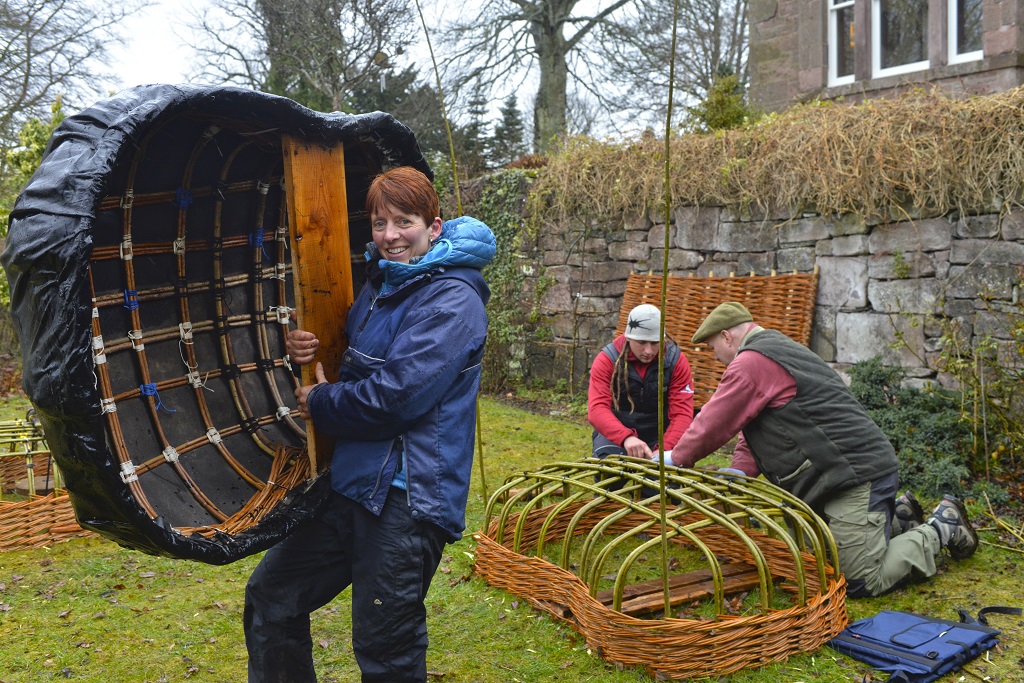
Using ancient skills to create a crafty coracle
Jane Wilkinson is a willow weaver with a passion for traditional craft and a love for the ancient art of coracle making.
Despite studying science at Edinburgh University, Jane’s love of woodlands led to her branching out in a different direction.
Now based in Alyth, near Blairgowrie, the willow weaver and artisan basket maker is intent on keeping traditional craft alive.
Working with coppice woodsmen in the Lake District was the spark for Jane’s love affair with willow. ‘I went on a basketry course and got the bug for it, and that’s 25 years ago now.’
Ten years ago, inspired by a fishing creel she had made, Jane made her first coracle, a traditional boat once used for fishing and hauling timber.
‘Coracles date from Neolithic times,’ she explains. ‘It’s a skin-on frame design and it is the earliest type of boat alongside a dugout log canoe.’
Although there are regional variations, the ancient craft hasn’t changed much. ’Traditionally, they would have been covered with cowhide, but I cover them with canvas and then it’s painted with bitumen paint,’ Jane says. ‘I’ve got my own ways, but it’s very similar to the original West Coast of Scotland coracle.

Jane Wilkinson carries her coracle (Photo: Angus Blackburn)
‘You make the coracle upside down with the gunwale in contact with the ground,’ she explains. ‘You start by putting the framework in and weaving the first couple of rows of the gunwale.’
The end result is a circular boat with a slight ‘waist’ to it that is paddled using a figure of eight ‘sculling’ motion. Jane now runs three-day courses in coracle making.
‘I produce the coracles more to teach than to sell, although I’ve sold a few.
‘It is the satisfaction of creating something, being outdoors and using natural materials. I’m not a modern
technology person, I prefer a simple lifestyle. I like traditional crafts and building techniques – it fascinates me.’
This feature was first published in 2016.
TAGS

